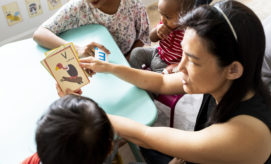Children are naturally wired to discover their world through repeated actions during play—such as transporting, transforming, connecting, or exploring. Movement is at the heart of each child’s experiences with these active play schemas.
Educators can observe these patterns of play in the ways that young children move their bodies and engage with materials like open-ended manipulatives, toys, or loose parts. By becoming aware of the various types of play schemas and their defining characteristics, early learning professionals can deepen their understanding of the way each child learns through play.
In this webinar, Heather Jackson and Lisa Agogliati, authors of Actions of Play, explore the power of play schemas as a tool for engaging in conversations with children and enhancing your observation of their play. The session will feature photos from their documentation and research, illustrating how play schemas became the foundation of children’s project work and inquiry-based investigations.
This webinar will encourage participants to view early childhood curriculum through a new lens, by…
- Naming common play schemas: transporting, enclosing/enveloping, transforming, trajectory, order/positioning, rotation/circularity, connecting, orientation/perspective.
- Identifying examples of movement characteristics within play schemas.
- Applying play schemas to launch and re-launch project work or investigations.
- Incorporating loose parts and children’s books into play schema invitations.
Learn more about this free event and register on the Early Learning Investigations website.
Date & Time
September 25, 11 AM PT | 2 PM ET





